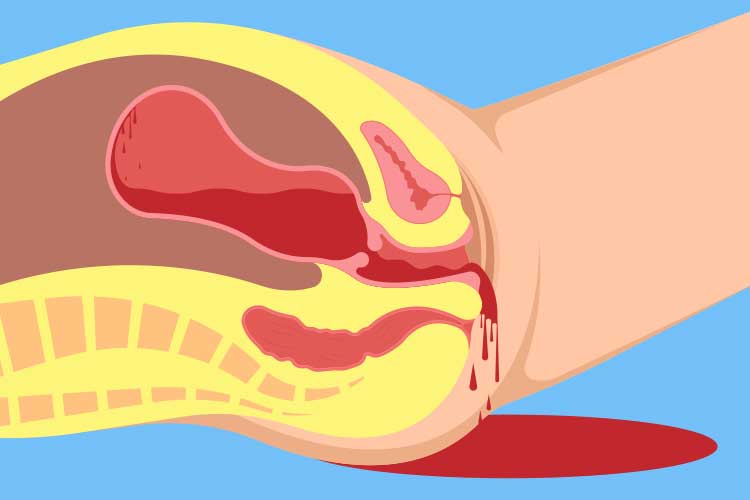Definition
Loss of ≥500mL of blood from the genital tract within 24hr of giving birth (primary PPH) or during the puerperium (secondary PPH).
EtiologyPrimary PPH
- Abnormal uterine tone (70%)
- Atony (most common cause)
- Distension
- Exhaustion
- Retention of placental tissue (19%)
- Retained placenta
- Incomplete placenta
- Placenta accreta, increta, or percreta
- Trauma to the genital tract
- Perineal tear or episiotomy
- Injury from instrumentation
- Uterine rupture
- Uterine inversion
- Abnormal clotting (“thrombin”)
- Eclampsia or HELLP syndrome
- Undiagnosed clotting disorder
- Disseminated intravascular coagulation
- Consumptive coagulopathy
Secondary PPH
- Endometritis
- Retained products of conception
- Poor involution of implantation site

Bleeding, with or without:
- A palpably boggy uterus (atony)
- An incomplete placenta (retention)
- A visible perineal source (trauma)
- Pain, fever, rigors, and/or foul-smelling discharge (endometritis)
Observe vital signs every fifteen minutes. Perform abdominal and speculum examinations.
Initial blood tests should include:
- FBE
- UEC
- Cross-match, group and hold
If a clotting problem is likely:
- LFT
- Clotting profile
In the setting of secondary PPH:
- High vaginal and endocervical swab
- Pelvic ultrasound
If the patient is febrile:
- Blood cultures
Primary PPH
- First steps
- Call for help
- Fetch the PPH trolley; consider activating your hospital’s massive transfusion protocol
- Gain large-bore IV access; consider volume expansion
- Consider catheterisation
- Resuscitate as needed
- Pharmacological options
- Ergometrin
- Syntocin
- Prostaglandin analogues
- Tranexamic acid
- Procedural options
- Uterine massage
- Bimanual compression
- Balloon tamponade
- Operative interventions
- Examination under anaesthesia
- Intra-abdominal manual compression
- B-Lynch stitch
- Ligation of the common iliac or uterine arteries
- Hysterectomy
